Enhancing the Quality of Sampled Phase-Only Hologram (SPOH) Based on Time-Division Comb Filtering
Abstract
1. Introduction
2. Sampled Phase-Only Hologram (SPOH)
2.1. Generating a Phase-Only Hologram with Direct Magnitude Removal
2.2. Generating a Sampled Phase-Only Hologram
2.3. Effect of Down-Sampling in the Frequency Space
3. Proposed Method to Generate an Enhanced SPOH with Time-Division Comb Filtering
3.1. Comb Filtering
3.2. Enhancing the Reconstructed Image of a SPOH with Time-Division Comb Filtering
4. Experimental Results
5. Conclusions
Author Contributions
Funding
Conflicts of Interest
References
- Poon, T.-C.; Liu, J.-P. Introduction to Modern Digital Holography with MATLAB; Cambridge University Press: Cambridge, UK, 2014. [Google Scholar]
- Shimobaba, T.; Ito, T. Computer Holography: Acceleration Algorithms and Hardware Implementations, 1st ed.; CRC Press: Boca Raton, FL, USA, 2019. [Google Scholar]
- Stolz, C.; Bigue, L.; Ambs, P. Implementation of high-resolution diffractive optical elements on coupled phase and amplitude spatial light modulators. Appl. Opt. 2001, 40, 6415–6424. [Google Scholar] [CrossRef] [PubMed]
- Tudela, R.; Labastida, I.; Mart’ın-Badosa, E.; Vallmitjana, S.; Juvells, I.; Carnicer, A. A simple method for displaying Fresnel holograms on liquid crystal panels. Opt. Commun. 2002, 214, 107–114. [Google Scholar] [CrossRef][Green Version]
- Liu, J.-P.; Hsieh, W.-Y.; Poon, T.-C.; Tsang, P.W.M. Complex Fresnel hologram display using a single SLM. Appl. Opt. 2011, 50, H128–H135. [Google Scholar] [CrossRef] [PubMed]
- Song, H.; Sung, G.; Choi, S.; Won, K.; Lee, H.; Kim, H. Optimal synthesis of double-phase computer generated holograms using a phase-only spatial light modulator with grating filter. Opt. Exp. 2012, 20, 29844–29853. [Google Scholar] [CrossRef]
- Gerchberg, R.W.; Saxton, W.O. A practical algorithm for the determination of the phase from image and diffraction plane pictures. Optik (Stuttg.) 1972, 35, 237–246. [Google Scholar]
- Yeom, J.; Hong, J.; Jung, J.; Hong, K.; Park, J.; Lee, B. Phase-only hologram generation based on integral imaging and its enhancement in depth resolution. Chin. Opt. Lett. 2011, 9, 120009. [Google Scholar] [CrossRef]
- Makowski, M.; Sypek, M.; Kolodziejczyk, A.; Mikula, G.; Prokopowicz, C. Three-plane phase-only computer hologram generated with iterative Fresnel algorithm. Opt. Eng. 2005, 44, 125805. [Google Scholar] [CrossRef]
- Pasienski, M.; DeMarco, B. A high-accuracy algorithm for designing arbitrary holographic atom traps. Opt. Express 2008, 16, 2176–2190. [Google Scholar] [CrossRef]
- Leportier, T.; Park, M.C. Generation of binary holograms for deep scenes captured with a camera and a depth sensor. Opt. Eng. 2017, 56, 013107. [Google Scholar] [CrossRef][Green Version]
- Liu, J.-P.; Yu, C.; Tsang, P.W.M. Enhanced direct binary search algorithm for binary computer-generated Fresnel holograms. Appl. Opt. 2019, 58, 3735–3741. [Google Scholar] [CrossRef]
- Liu, J.; Li, X. Complex Amplitude Modulation in Real Time Holographic Computation. Signal Recovery and Synthesis, OSA Technical Digest (online); Optical Society of America: Washington, DC, USA, 2014. [Google Scholar]
- Li, X.; Liu, J.; Jia, J.; Pan, Y.; Wang, Y. 3D dynamic holographic display by modulating complex amplitude experimentally. Opt. Express 2013, 21, 20577–20587. [Google Scholar] [CrossRef] [PubMed]
- Kim, Y.; Lee, J.; Won, Y. Low-noise high-efficiency double-phase hologram by multiplying a weight factor. Opt. Lett. 2019, 44, 3649–3652. [Google Scholar] [CrossRef] [PubMed]
- Arrizón, V.; Sánchez-de-la-Llave, D. Double-phase holograms implemented with phase-only spatial light modulators: Performance evaluation and improvement. Appl. Opt. 2002, 41, 3436–3447. [Google Scholar] [CrossRef] [PubMed]
- Hsueh, C.; Sawchuk, A. Computer-generated double-phase holograms. Appl. Opt. 1978, 17, 3874–3883. [Google Scholar] [CrossRef] [PubMed]
- Tsang, P.W.M.; Chow, Y.T.; Poon, T.-C. Generation of edge-preserved noise-added phase-only hologram. Chin. Opt. Lett. 2016, 14, 100901. [Google Scholar] [CrossRef]
- Buckley, E. Real-time error diffusion for signal-to-noise ratio improvement in a holographic projection system. J. Disp. Tech. 2011, 7, 70–76. [Google Scholar] [CrossRef]
- Buckley, E. Holographic laser projection technology. Proc. SID Symp. 2008, 39, 1074–1078. [Google Scholar] [CrossRef]
- Tsang, P.W.M.; Chow, Y.T.; Poon, T.-C. Generation of patterned-phase-only holograms (PPOHs). Opt. Express 2017, 25, 9088–9093. [Google Scholar] [CrossRef]
- Cruz, M. Full image reconstruction with reduced speckle noise, from a partially illuminated Fresnel hologram, using a structured random phase. Appl. Opt. 2019, 58, 1917–1923. [Google Scholar] [CrossRef]
- Tsang, P.W.M.; Chow, Y.T.; Poon, T.-C. Generation of phase-only Fresnel hologram based on down-sampling. Opt. Express 2014, 22, 25208–25214. [Google Scholar] [CrossRef]
- Tsang, P.W.M.; Chow, Y.T.; Poon, T.-C.; Liu, J.P. Generation and optical display of a binary-sampled phase-only hologram. Chin. Opt. Lett. 2016, 14, 010004. [Google Scholar] [CrossRef]
- Tsang, P.W.M.; Poon, T.-C.; Wang, W.; Zhu, X.; Chan, K. Integrating multiple images in a sampled phase-only hologram. Chin. Opt. Lett. 2019, 17, 050901. [Google Scholar] [CrossRef]
- Tsang, P.W.M.; Chow, Y.T.; Poon, T.-C. Generation of complementary sampled phase-only holograms. Opt. Express 2016, 24, 23390–23395. [Google Scholar] [CrossRef] [PubMed]
- Zhang, Y.-P.; Wang, F.; Poon, T.-C.; Fan, S.; Xu, W. Fast generation of full analytical polygon-based computer-generated holograms. Opt. Express 2018, 26, 19206–19224. [Google Scholar] [CrossRef]
- Tsang, P.W.M.; Poon, T.-C.; Wu, Y.M. Review of fast methods for point-based computer-generated holography. Photonics Res. 2018, 6, 837–846. [Google Scholar] [CrossRef]
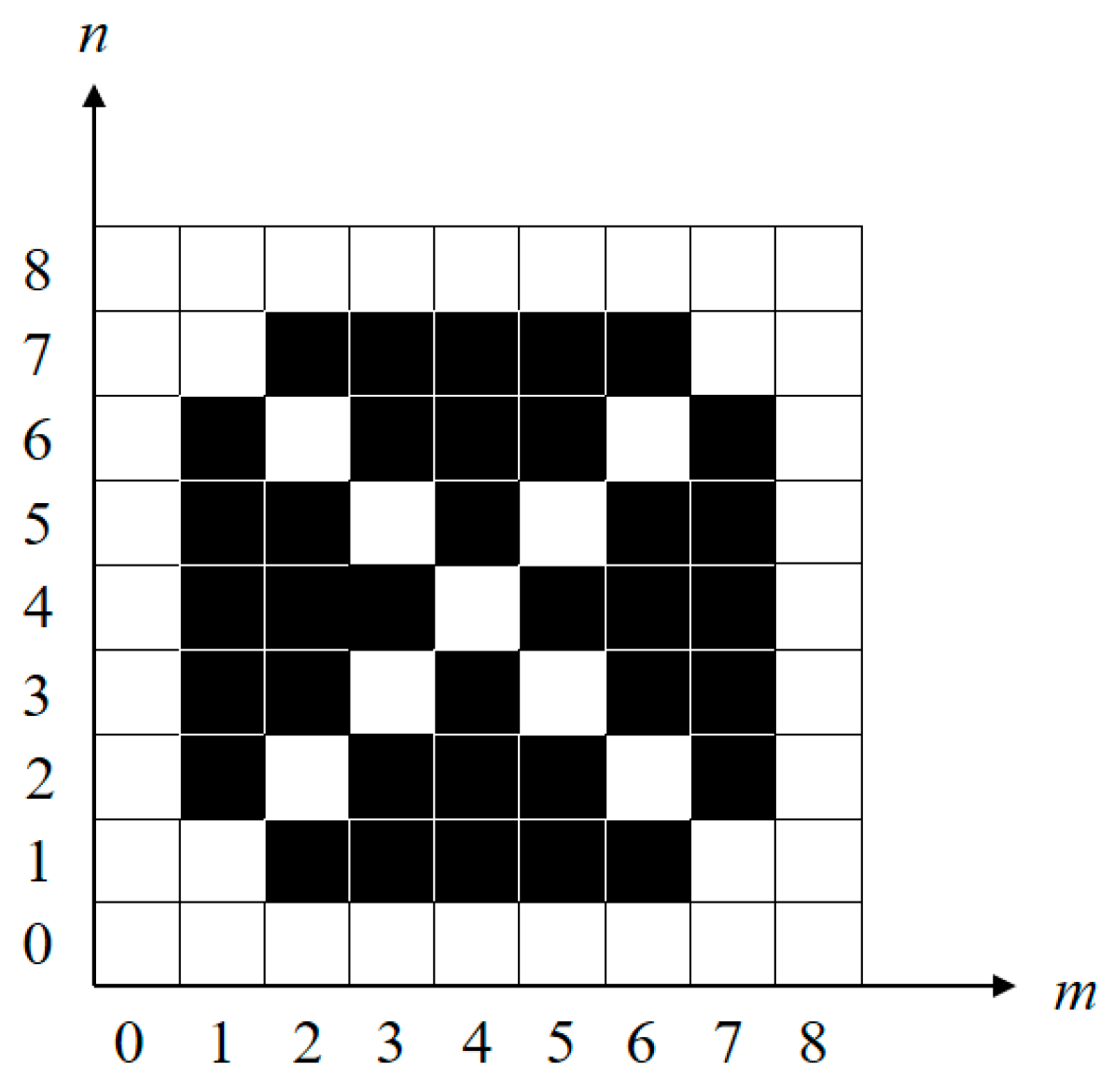
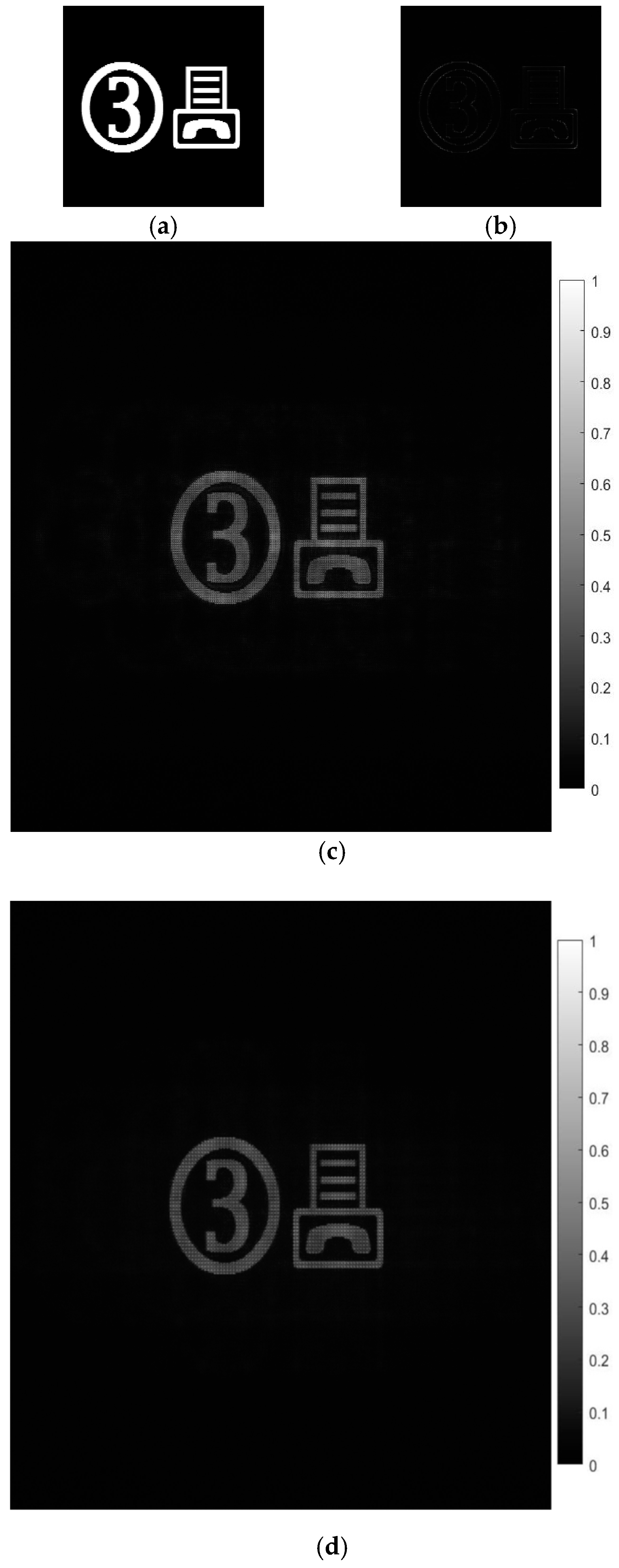
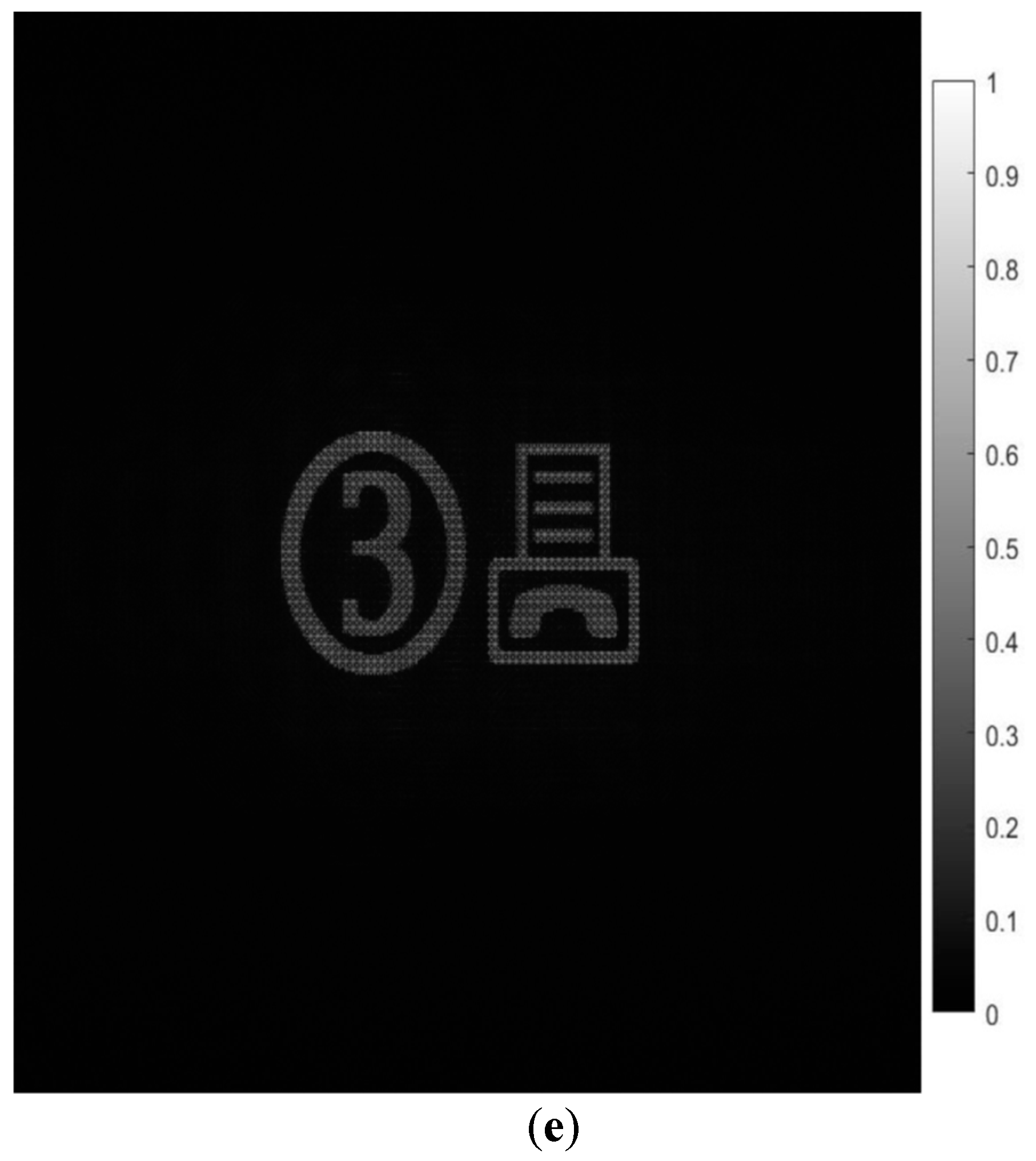


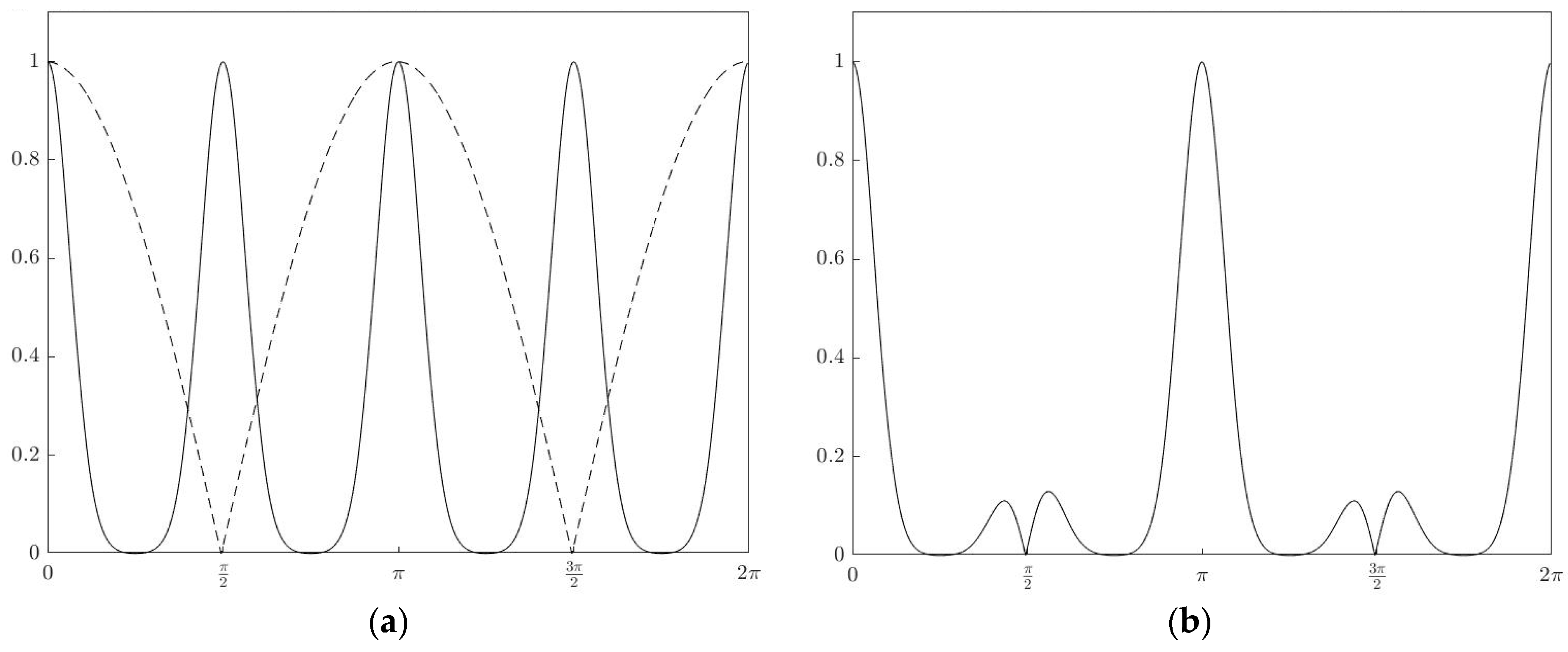
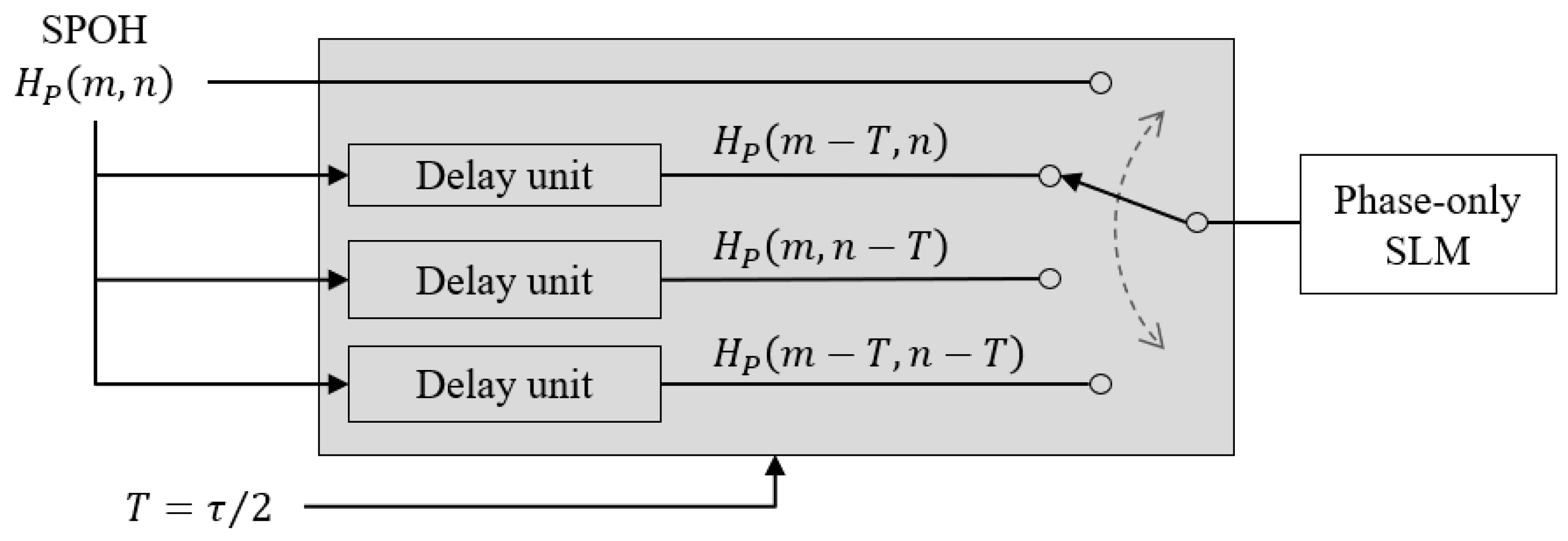



| Wavelength of light | 532 nm |
| Pixel size of hologram and image | 6.4 um |
| Axial distance between hologram and image | 0.16 m |
| Down-sampling factor | 8, 12, and 16 |
© 2020 by the authors. Licensee MDPI, Basel, Switzerland. This article is an open access article distributed under the terms and conditions of the Creative Commons Attribution (CC BY) license (http://creativecommons.org/licenses/by/4.0/).
Share and Cite
Tsang, P.W.M.; Liu, J.-P.; Lam, H.; Poon, T.-C. Enhancing the Quality of Sampled Phase-Only Hologram (SPOH) Based on Time-Division Comb Filtering. Appl. Sci. 2020, 10, 2732. https://doi.org/10.3390/app10082732
Tsang PWM, Liu J-P, Lam H, Poon T-C. Enhancing the Quality of Sampled Phase-Only Hologram (SPOH) Based on Time-Division Comb Filtering. Applied Sciences. 2020; 10(8):2732. https://doi.org/10.3390/app10082732
Chicago/Turabian StyleTsang, Peter W. M., Jung-Ping Liu, Hoson Lam, and Ting-Chung Poon. 2020. "Enhancing the Quality of Sampled Phase-Only Hologram (SPOH) Based on Time-Division Comb Filtering" Applied Sciences 10, no. 8: 2732. https://doi.org/10.3390/app10082732
APA StyleTsang, P. W. M., Liu, J.-P., Lam, H., & Poon, T.-C. (2020). Enhancing the Quality of Sampled Phase-Only Hologram (SPOH) Based on Time-Division Comb Filtering. Applied Sciences, 10(8), 2732. https://doi.org/10.3390/app10082732





